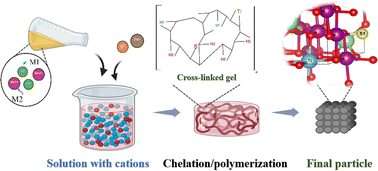The use of lithium-ion batteries (LIBs) continues to grow to overcome environmental challenges, and spinel LiMn2O4 is employed as a high-performance and safe electrode material in this context. In this study, we introduce a novel multi-substituted spinel by partially replacing manganese (Mn4+) with titanium (Ti4+) and oxygen (O2−) with sulfur (S2−) at the octahedral 16d and 32e sites. We explore the substitution with Ti alone and the intricate synergistic effects resulting from the simultaneous multisubstitution with Ti and S. These synergistic effects are designed to enhance the electrochemomechanical properties and prolong the life cycle of spinel LiMn2O4. This approach stabilizes the structure by mitigating the Jahn–Teller distortion and maintains capacity integrity throughout the spinel's operational lifespan. We synthesize spinel LiMn2O4 by using the sol–gel method and investigate the synergistic effects of Ti and S substitution on the structural, morphological, and electrochemical attributes of the LiMn2O4 cathode. The electrochemical properties show that the new strategy leads to enhanced optimization, structural stability, and cycling performance. The rate capability of the LiMn1.78Ti0.22O3.97S0.03 cathode with Ti and S substitution is observed, where the 10th discharge capacity is 114 mA h g−1 at 5C and charge/discharge capacity is 123/122 mA h g−1 after 500 cycles with a capacity retention of 90.3%, which is significantly higher than the capacity retentions of LiMn1.8Ti0.22O4 (76.6%) and non-substituted LiMn2O4 (33.9%).
